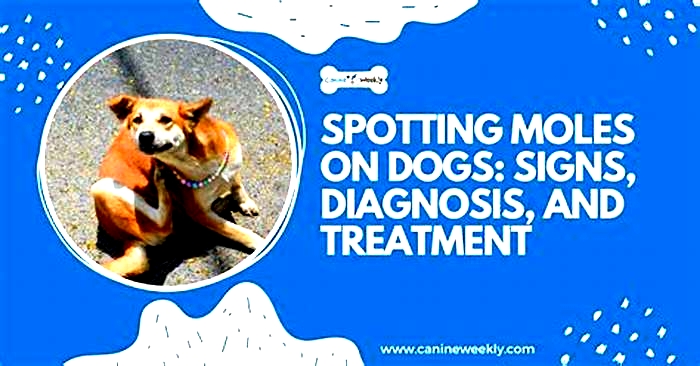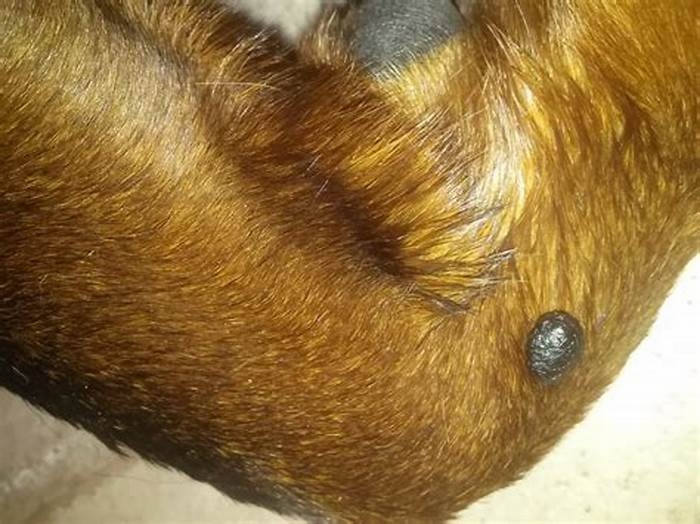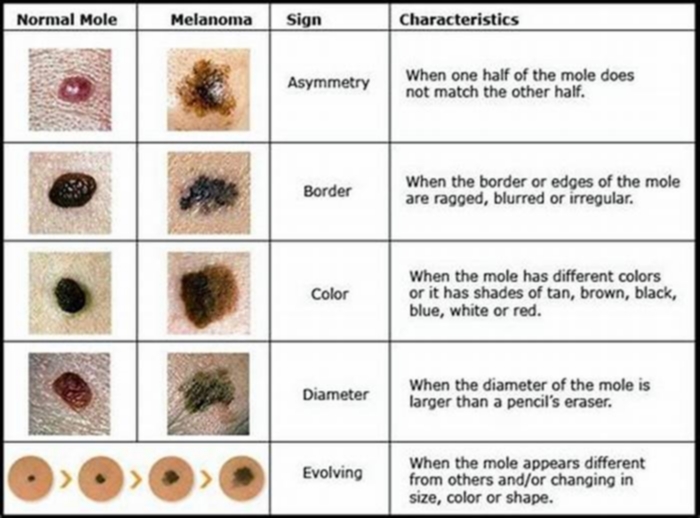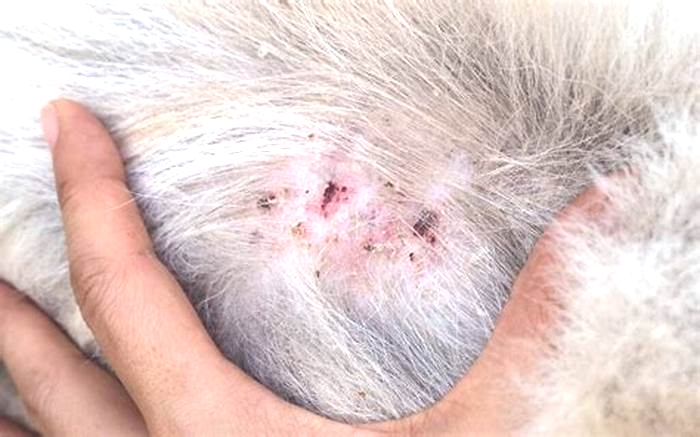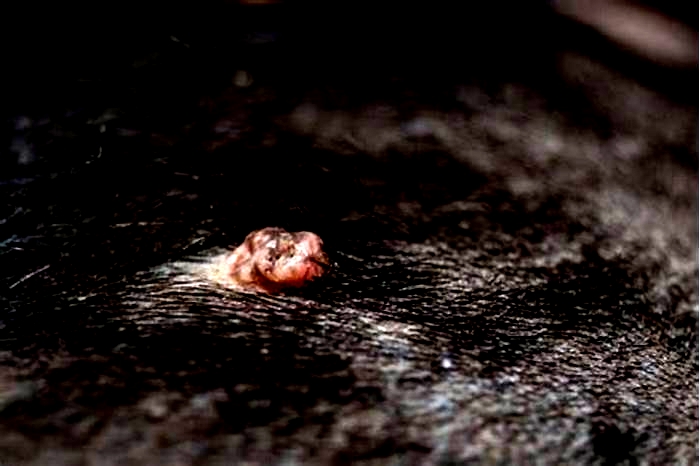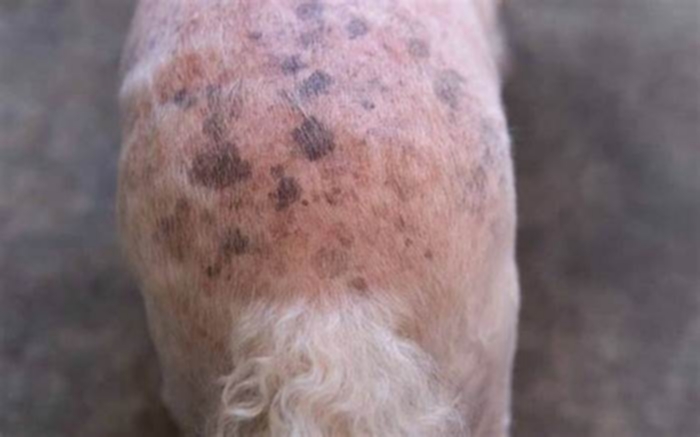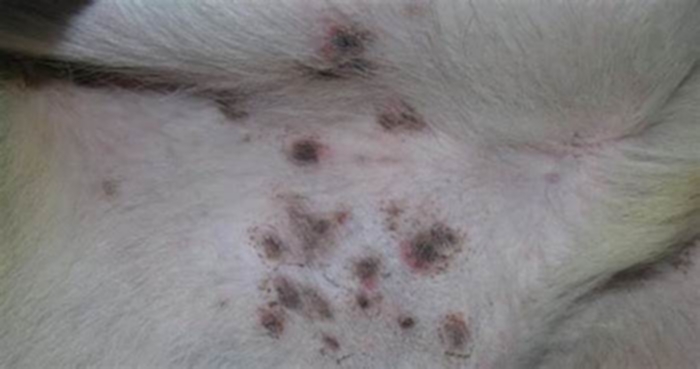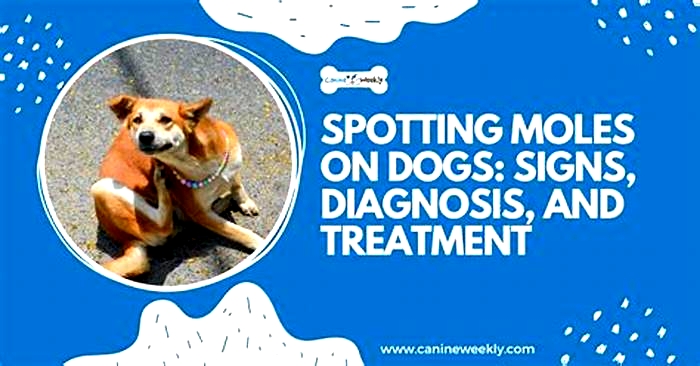What are the little black moles on my dog s belly
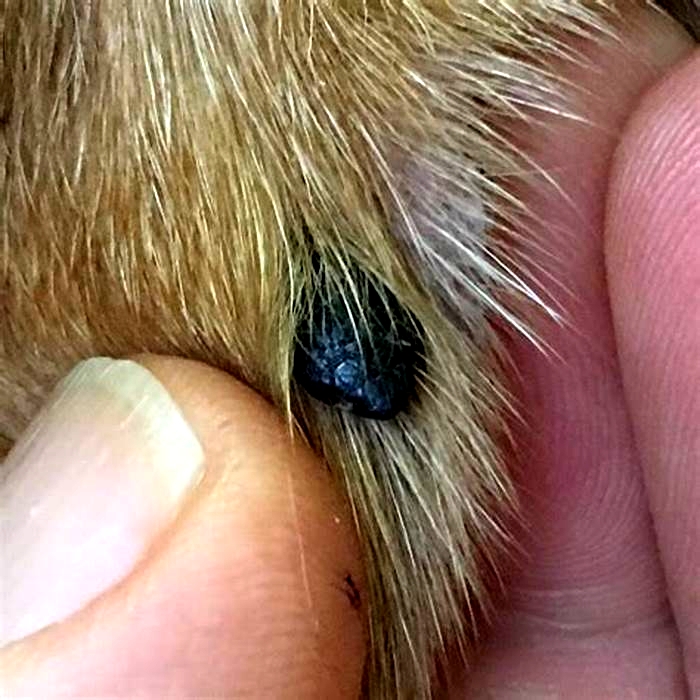
6 Types of Moles on Dogs [With Pics] and What to Do
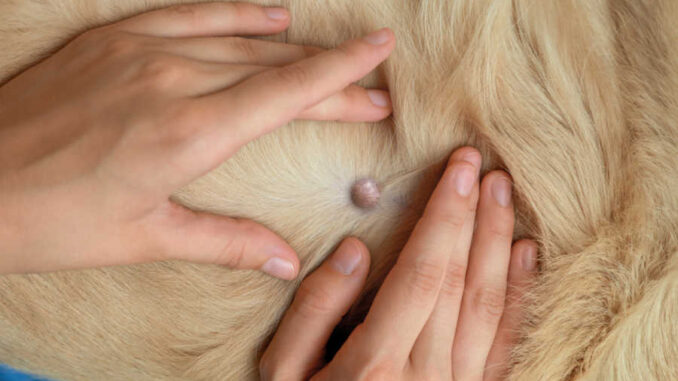
This article was updated on October 16th, 2023
When an owner comes to my clinic because they are worried about a new growth or mole on their dog, the question on everyones lips is, What is it?.
When a new skin lesion resembles a mole, owners will inevitably wonder: do dogs have moles? The answer is yes. However, we refer to them as nevus (singular) or nevi (plural). Some owners and vets, however, will use the word mole interchangeably with skin tag or wart.
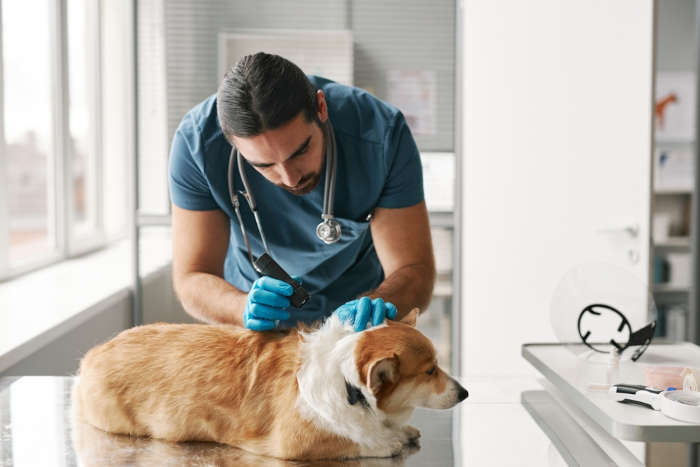
Types of moles (with pictures)
Technically, a mole is a nevus. This is a benign skin growth that is usually small and quite symmetrical. Uncommonly, a nevus can be cancerous or can transform into a cancer. Cancerous moles on dogs are quite rare, thankfully.
As mentioned, other types of lesions such as a cyst, skin tag or wart may also be referred to as moles by some people. Lets take a look at some of the more common types of moles or bumps in dogs, with pictures:
Skin Tags
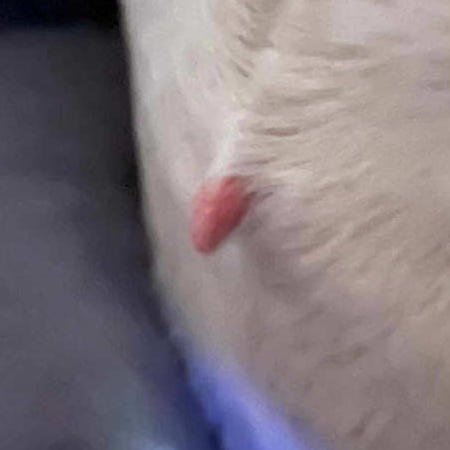
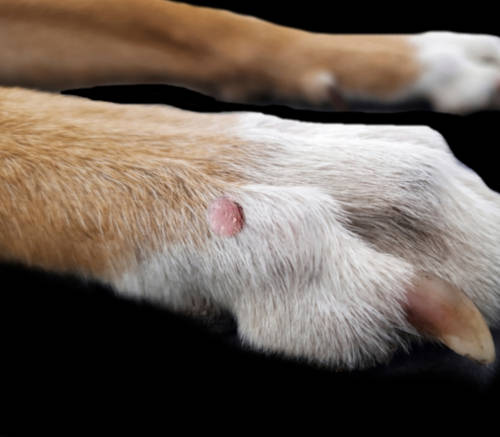
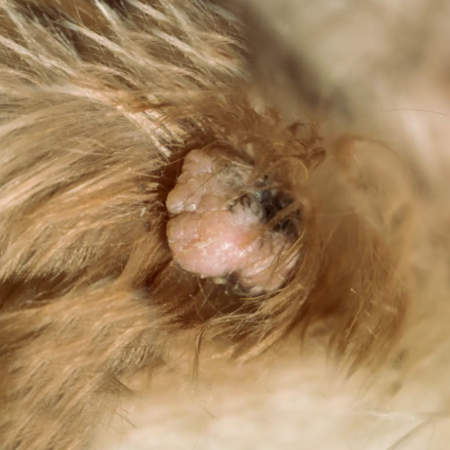
In older dogs especially, skin tags start to appear. We often see them on the face, elbows, armpits, and ankles. They can dangle from the skin and may be dark or a fleshy pink color. They are slow-growing and should not bother the dog.
Generally, we would monitor skin tags but would not remove them unless they were becoming a nuisance. Learn more about Skin Tags.
Cysts
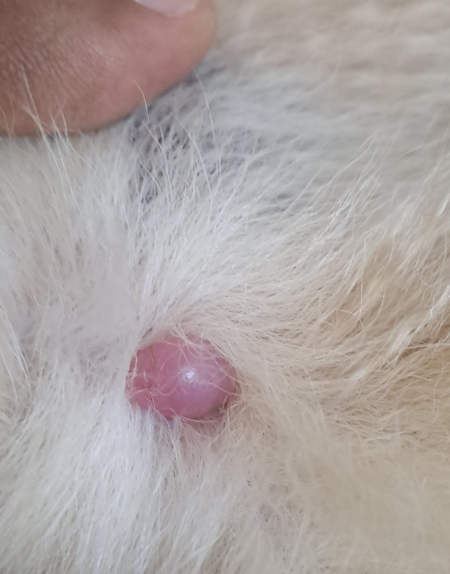
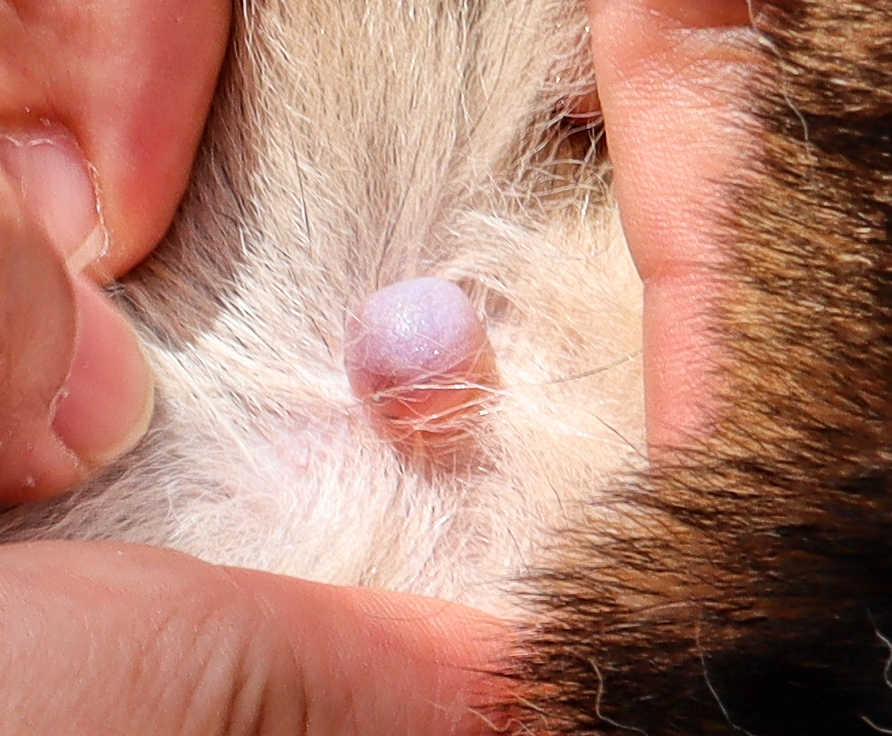
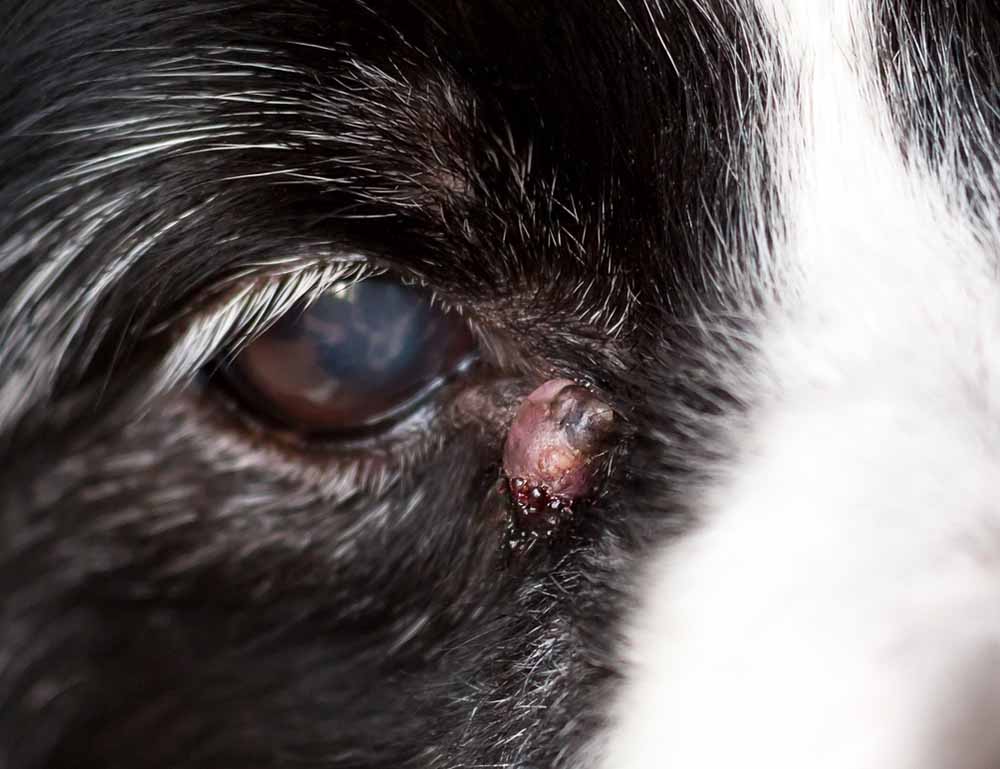
Dogs develop all kinds of cysts, some of which are fluid-filled and others that contain a thicker substance that resembles cottage cheese.
Canine cysts can appear anywhere on the body and may grow to a substantial size. However, most cysts remain quite small. If a cyst is drained or ruptures, it will refill quickly. While cysts usually do not need to be removed, removing one involves a surgical procedure to extract the cyst wall. Learn more about Cysts in Dogs.
Warts or sebaceous adenomas
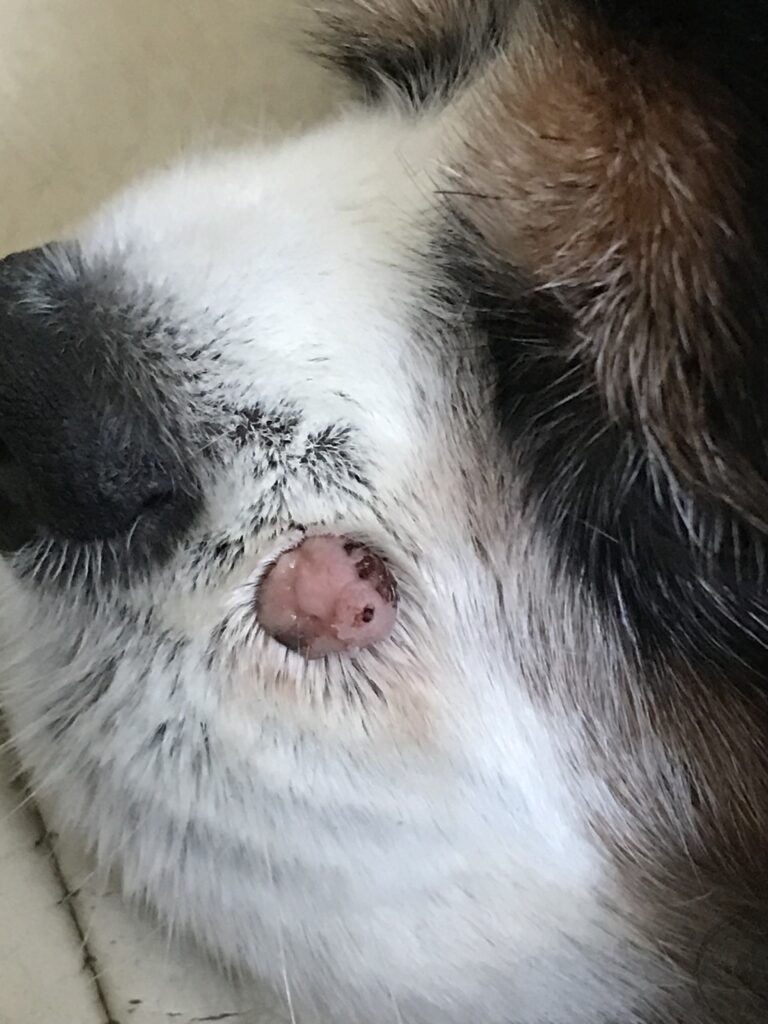
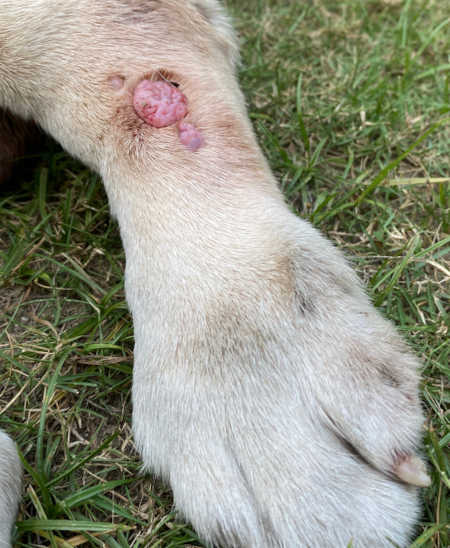
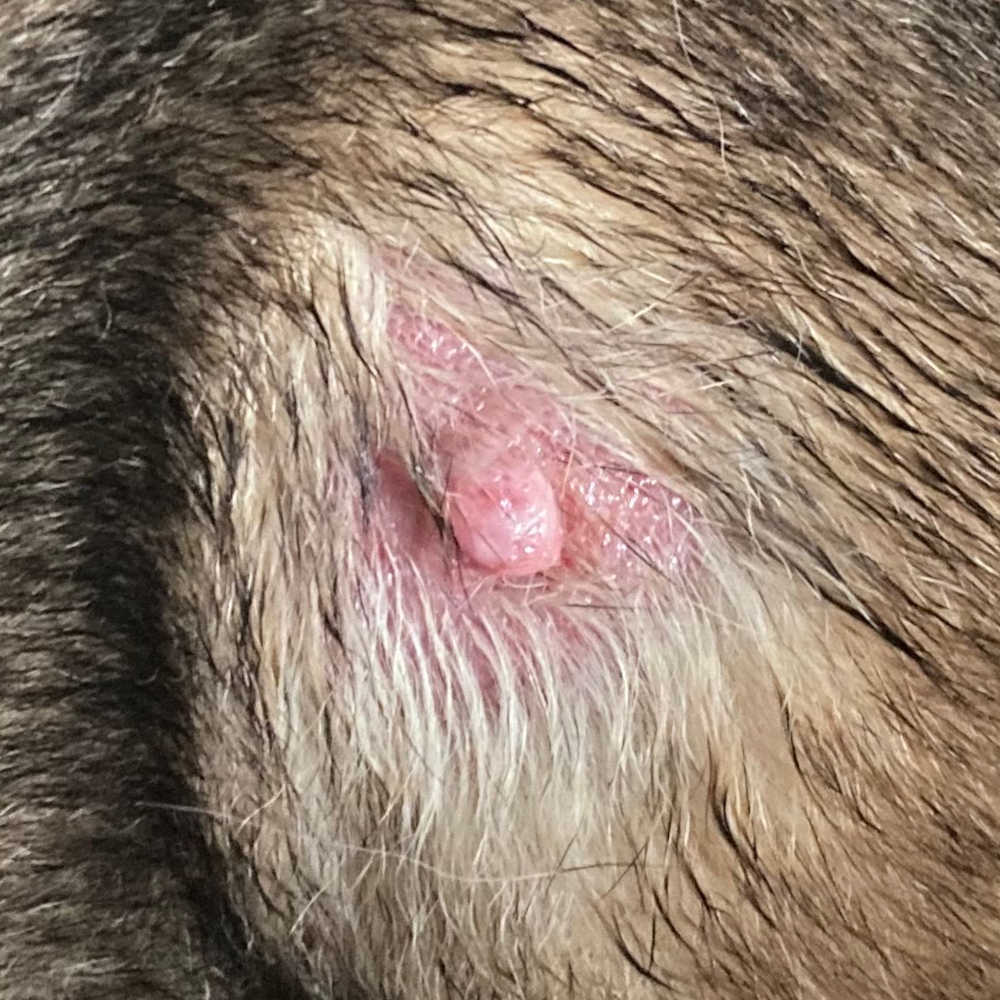
Warts tend to be light pink and can resemble small cauliflowers or brains. We tend to see warts in two dog populations: puppies and seniors. This is because both of these age groups struggle to fight off infections and warts are spread by a virus. For younger dogs, warts usually resolve within a few months. For older dogs, they may persist and grow slowly over time. Learn more about Warts in Dogs with pictures and veterinarian info.
Cancer
Cancerous lumps come in all shapes and sizes, as shown in the pictures below.
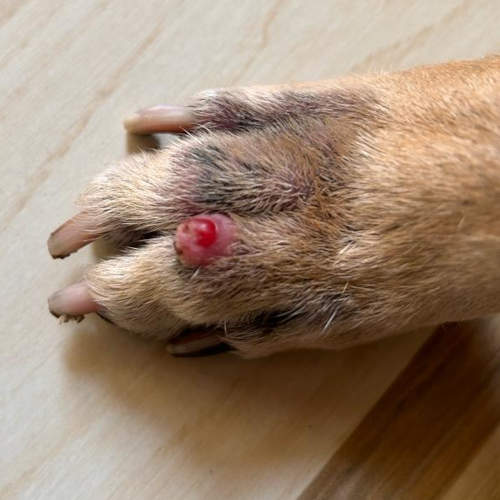
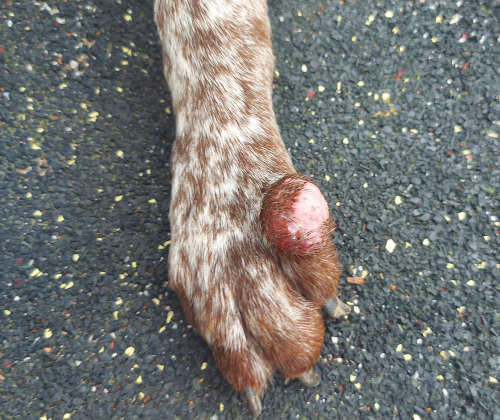
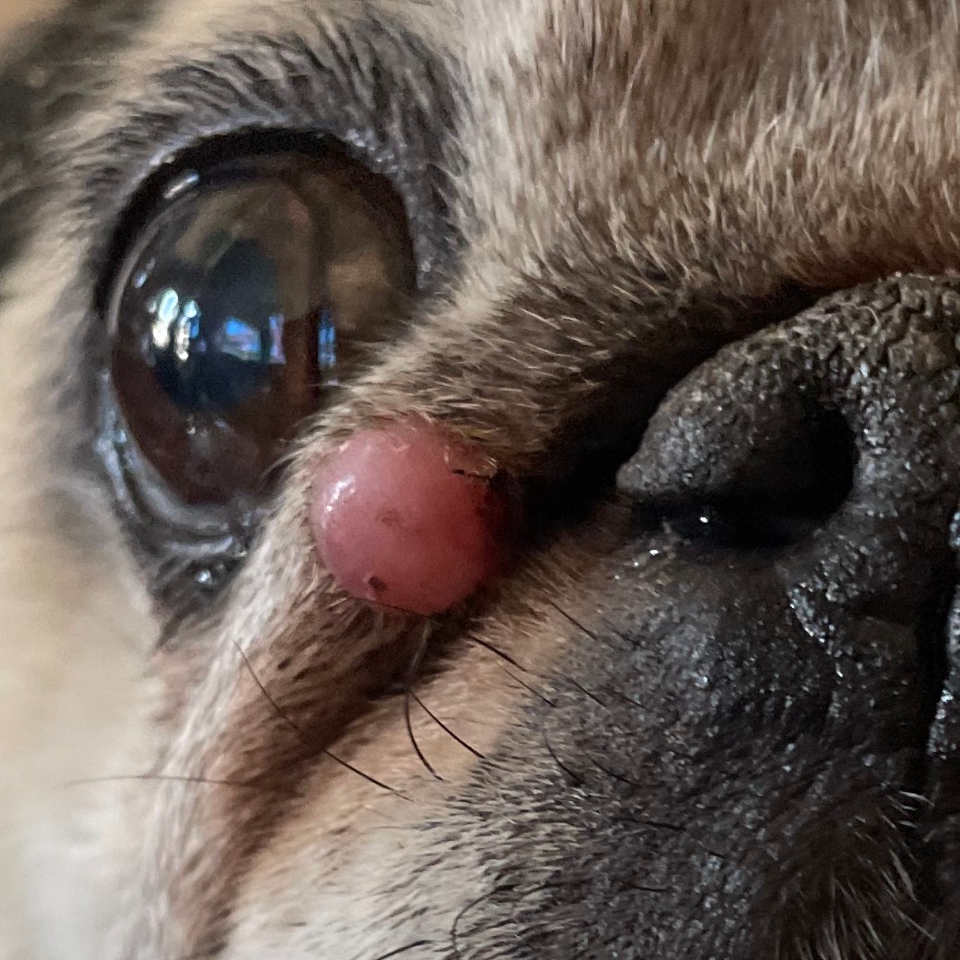
A black mole on a dog (rather than white, pink or red) is more likely to be a cancer called melanoma. Some of the more common places where malignant melanoma occurs include the mouth, near the claws, and sometimes within the eye. Learn more about Cancerous Lumps.
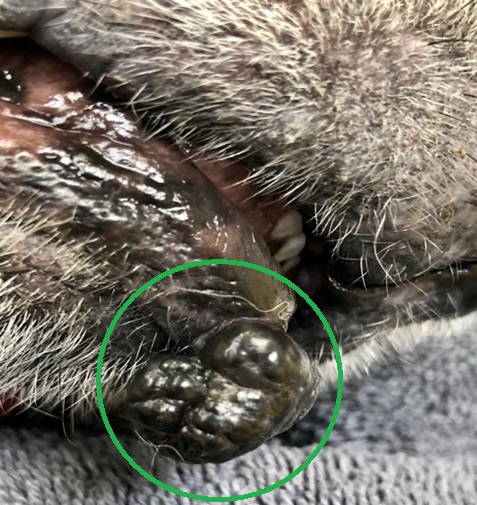
True nevi
A small black or brown mole on a dog may be a true nevus. These moles can appear on the face, flank, and paws, as well as other locations. As these lesions are benign, there is generally no need to intervene or provide treatment. However, a vet may discuss sampling the lesion to rule out anything more sinister, such as a melanoma.
Related post: Pictures of Common Lumps & Bumps on Dogs.
What to do when you find a mole or bump on your dog
1. Take pictures: When a new bump is noticed, it is a good idea to snap a photo, so you can assess if it is growing or changing over the coming days and weeks.
2. Consider a buster collar: If your dog has been licking or chewing at it, it is wise to use a buster collar to prevent this. This helps ensure the lesion does not become infected.
3. Reach out to your vet: A lesion that is not going away after a few days should be examined by a vet. Most of the time, new moles or warts will be something we monitor. Less often, your vet may discuss sampling or removal of the lump, particularly if they are concerned about cancerous tumors such as melanomas or mast cell tumors.
When is it ok to wait-&-see?
If youve only just noticed a small lesion and it is not bothering your dog, you may monitor it over a few days. It could be a small scab or insect sting, which will resolve quickly.
It is sensible to consult your veterinarian if the new lesion is persisting for over a week or if it seems to be quickly growing and changing. A consultation should also be booked if a lesion suddenly gets bigger or becomes infected.
Veterinary treatment, costs, and recovery
For many new lumps and bumps, the cost involved may be limited to the consult (about $60-100), as the vet may feel that the lesion is likely benign and needs no intervention. However, it is important to remember that the only way to know this is to sample and test the lesion.
If the mole needs to be investigated, this will be more costly. This can involve a Fine Needle Aspirate ($150-250) or biopsy ($200-400).
Removing a mole may be more costly, as it usually means the pet needs to be under an anesthetic. This can mean a bill of $400-900. This price should include the lab fees for analyzing the growth.
Frequently Asked Questions
What causes the growth of moles or bumps in dogs?
There is likely a large genetic component when it comes to the development of these lesions, but other factors can play a role, too.
- Exposure to sun. Dogs who spend a lot of time in the sun, particularly those who are short-furred, seem more prone to moles and skin tags.
- Weight gain. Dogs who carry more fat than they should can be more prone to developing certain lesions.
- Friction. When skin rubs against itself, especially in places like the armpits and groin, this can lead to skin tags developing.
Can moles or bumps on dogs be cancerous?
Yes, it is possible for these skin lesions to be malignant, which is why a vet visit should be booked for any lesion that is not going away quickly. Read our article about cancerous lesions and bumps in dogs.
How can I differentiate between a benign and malignant mole or bump?
There is no definitive way to do this without sampling the lesion and looking at it under the microscope. However, malignant lesions do share certain characteristics, such as being quick to grow, ulcerating, and becoming infected. Learn more: cancerous lesions and bumps.
Can moles or bumps on one dog spread to other dogs or humans?
No, moles cannot spread and are not contagious. Warts (papillomas), on the other hand, can spread from dog to dog.
Are certain dog breeds more prone to developing bumps?
Yes, there is a genetic component, so we will see certain lumps more often in certain breeds. Poodles, Schnauzers, and Golden Retrievers may be over-represented.
Dr Linda Simon (MVB MRCVS) has 10 years of experience as a veterinarian. She is a veterinary surgeon with a special interest in geriatric patient care, dermatology and endocrinology. She is a member of the British Royal College of Veterinary Surgeons. She graduated top of her class from UCD School of Veterinary Medicine in Dublin in 2013. Linda has also worked as a locum vet in a range of clinics, including 24 hour emergency clinics and busy charity clinics.
View all posts
Disclaimer: This website's content is not a substitute for veterinary care. Always consult with your veterinarian for healthcare decisions. Read More.
Lumps and Bumps on Dogs Skin: Signs, Symptoms, Causes
What is that strange bump on your dog? Discovering a skin lump or bump on your dog can set your mind reeling and heart racing, but theres no need to panic. A bump on your dog doesnt automatically mean cancer. While skin bumps and strange lumps on dogs should always be taken seriously, certain types of bumps are more common than you might think, and theyre often harmless.
Types of Skin Lumps and Bumps on Dogs
Skin bumps that youre likely to find on your dog fall into several categories. Some of these are more common in older dogs. As a new puppy owner, youll want to file these away and keep an eye out for them as your pup ages. While some of these are non-cancerous, some can be caused by infections or other underlying conditions. Its always best to have a veterinarian examine and diagnose anychanges to your dogs skinand determine a course of treatment, if needed.
Lipomas
These fatty tumors appear as soft, round lumps of flesh beneath the skin. Theyre made up entirely of fat cells and are always benign, or non-cancerous. Lipomas are usually found in older dogs and dogs who are overweight. Larger breeds are more prone to them, although they can be found in small breeds as well. Your vet may perform a fine needle aspirate, using a thin needle to collect cells and examine them under a microscope to verify that theyre fatty tissue.
Sebaceous Cysts
These are smaller bumps that can look like a pimple or a wart. They form from blocked oil glands and may burst and release a pasty, white goo. These most commonly occur in breeds with fine hair, like the Poodle and the Bichon Frise. They may disappear on their own, although some can remain for years and have the potential to become infected. Surgical removal is an option if they irritate your dog.
Warts
These small, cauliflower-like bumps are caused by the papillomavirus. They occur most often in puppies who dont yet have fully-developed immune systems and usually disappear on their own. Although the virus is contagious between dogs, it cant be transmitted from dogs to humans.
Skin Tags
These are fibrous bumps that look like small flaps or raised stalks of skin, although they may occasionally look like small bumps. They may or may not have hair growing on them. Skin tags are caused by overactive cells called fibroblasts and can occur in dogs of any breed or any age. Theyre often harmless, although your vet might want to do a biopsy to make sure, especially if the tag changes in shape, color or size.
Abscesses
Usually caused by an infection, abscesses are swollen tissue that can form around bug bites, animal bites, infected glands, and other types of sores. If not treated early they may burst, which is painful for your dog. Antibiotics may be required to treat the infection.
Button Tumors
Also known as a histiocytoma, these are benign tumors that affect puppies and young dogs between eight weeks and three years of age. Theyre caused by an overproduction of immune cells and typically disappear on their own.
Mast Cell Tumors
These are cancerous tumors that may occur either beneath or on top of the skin. Theyre often solid to the touch and irregular in shape. The appearance of such a tumor should receive immediate attention from a veterinarian. Theyll likely want to remove the tumor, if possible, before performing a biopsy to determine if cancer might have spread through your dogs body. If surgical removal isnt possible, you may be referred to a veterinary oncologist for chemotherapy or radiation treatment.
Most Common Bumps and Lumps on Puppies
Thankfully, cancer in puppies is rare. The most common types of lumps or bumps found on puppies are warts, skin tags, button tumors, and abscesses. In these cases, your dogs veterinarian may recommend a wart ointment or other skin treatment. There are also some supplements that claim to help dissolve fatty lipoma skin lumps on dogs. Its also not unusual for puppies to develop swelling at the site of a vaccination injection, caused by a conglomeration of immune cells that gather there.
Typically, this vaccination site swelling subsides within a week. However, in rare cases, this gathering of cells can turn into a malignant tumor. Contact your vet if a vaccination lump lasts more than a week. They may advise you to keep a watchful eye on it and bring your pup in for a biopsy if the lump continues past three months, is more than an inch in diameter, or continues to grow or change shape.
Although its rare, it is possible for puppies to develop certain types of cancer, so its important to have any lumps, bumps, or other changes in your puppys skin examined by a veterinarian.
When Should You Worry About a Dogs Skin Bump?
Have your dog examined immediately if you discover a lump thats hard or firm to the touch, irregularly shaped, or if you notice a change in any existing lumps or bumps regarding size, texture, or color. Your vet should also immediately take a look at any bumps that ooze fluid. But again, while some lumps and bumps are harmless, its best to let your vet take a look at any new bumps or lumps on your dog and let your veterinarian make that determination.
Dealing with the possibility of tumors or infections in your dog or puppy can be costly as well as emotionally stressful for both you and your pet. Pet health insurance can help cover some of the cost, giving you one less thing to worry about and letting you focus on the best treatment options for your companion.

